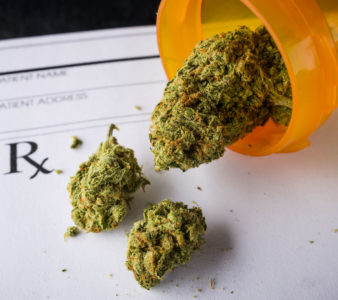 A new study found that chronic pain was the most common reason why individuals in state-approved medical marijuana programs turned to cannabis to help with their health condition.
A new study found that chronic pain was the most common reason why individuals in state-approved medical marijuana programs turned to cannabis to help with their health condition.
The study looked at data from 15 states who have legalized marijuana for medicinal purposes. Here’s a look at the top three reasons why people turned to medical marijuana:
- Chronic Pain
- Stitfness related to Multiple Sclerosis
- Chemotherapy-related nausea
“The majority of patients for whom we have data are using cannabis for reasons where the science is the strongest,” said lead author Kevin Boehnke of the University of Michigan.
Marijuana For Chronic Pain
More than 30 states allow the use of medical marijuana, but the conditions that are eligible for the product vary from state to state. For example, Minnesota allows medical marijuana to be used to alleviate symptoms from conditions like glaucoma, chronic pain, PTSD, seizures and much more. They are always evaluating which conditions meet the requirements, and Minnesota will add Alzheimer’s Disease to the list of approved conditions in July of this year.
When taking a closer look at the study results, researchers found that about two-thirds of the roughly 730,000 reasons listed for taking medical marijuana were related to chronic pain. Since patients could report more than one pain condition, researchers say the figure may be a little over-inflated, but it still speaks to how many people are looking for a better way to deal with their chronic pain condition.
“Cannabis is the first thing I’ve found that actually makes the pain go away and not leave me so high that I can’t enjoy my day,” said Brandian Smith, 37, of Illinois, who takes medical marijuana for her fibromyalgia.
Researchers also noted that in Arizona, Colorado, Nevada and Oregon, there was a noticeable decline in medical marijuana patients after those states legalized recreational marijuana. Currently there are about two million people in the United States who use medical marijuana for their pain condition.
Is you need help managing your pain condition, set up an appointment with a pain specialist like Dr. Cohn.
 One of the approved conditions for medical marijuana in the state of Minnesota is intractable pain. Intractable pain is pain that can’t easily be tracked to a specific source and treated successfully, and many patients with chronic pain are deemed to have intractable pain. So you’d think the medical marijuana program in Minnesota would be beneficial for chronic pain sufferers? Well, according to a recent article in the Star-Tribune, it’s anything but easy.
One of the approved conditions for medical marijuana in the state of Minnesota is intractable pain. Intractable pain is pain that can’t easily be tracked to a specific source and treated successfully, and many patients with chronic pain are deemed to have intractable pain. So you’d think the medical marijuana program in Minnesota would be beneficial for chronic pain sufferers? Well, according to a recent article in the Star-Tribune, it’s anything but easy.

